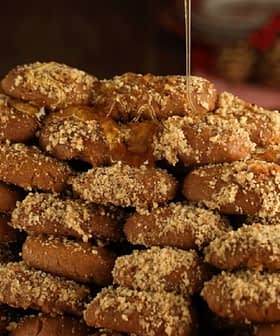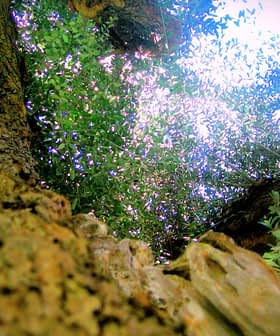Canneto Sabino: A Living Legacy of Sabina's Olive Oil Tradition

The Olive Tree of Canneto Sabino in the Sabina region is a thousand-year-old symbol of the area’s enduring heritage of olive cultivation, with roots dating back to the Benedictine monks of Farfa. The tree’s majestic presence, historical significance, and the high-quality olive oil it produces make it a cherished symbol of the region’s rich history and tradition.
In the enchanting region of Sabina, the enduring art of olive oil production is vibrantly embodied in the magnificent olive tree of Canneto Sabino.
With a storied past dating back centuries, this awe-inspiring tree is a testament to the enduring heritage of olive cultivation in the southeastern region of Lazio.
According to local legends, this majestic Olivastrone’s roots can be traced to the reign of Sabino Numa Pompilio, the king of Rome, from 715 to 673 BCE.
See Also:Unveiling the Mystery and Magic Surrounding Tuscany’s Olivo della StregaHowever, historical estimates suggest a more plausible age of around a millennium, situating its planting during the momentous reclamation efforts led by the Benedictine monks of Farfa in the Canneto region.
Remnants of this period can still be seen in the preserved Tanteri house and the adjacent chapel of Madonna della Neve.
Numerous ancient documents testify to the Sabina region’s longstanding tradition of olive cultivation.
In his work Geography, the renowned historian Strabo wrote of the extraordinary abundance of olive trees that graced the fertile soil of Sabina.
Marco Terenzio Varrone, in his seminal work De re rustica, provided timeless advice on olive cultivation, laying the foundation for Sabina’s esteemed olive oil production methods.
Archaeological discoveries further illuminate the region’s deep-rooted connection to olives. The remarkable find of the Poggio Sommavilla flask believed to date back to the 7th century BCE and now housed in the Museum of Fine Arts in Boston, not only represents the oldest known example of pre-Roman Sabine script but also bears traces of olive oil, serving as a tangible testament to the region’s olive culture.
See Also:Safeguarding Italy’s Millenary TreesAmong the esteemed voices praising the quality of Sabina’s olive oil is Claudio Galeno, the father of modern pharmacology, who hailed the oil from Sabina as “the finest in the known world.”
Acquired by the Bertini family in 1876, the towering olive tree reaches approximately 15 meters in height. Its majestic trunk boasts a circumference of 7.2 meters, while its sprawling canopy spans around 30 meters in diameter. Notably, a hollow cavity at the base of the trunk leads to the heart of its roots, creating a captivating cavern within.
Canneto Sabino produces olives of the Olivastro variety, which exhibit distinctive characteristics: its elliptic-lanceolate leaves and small, ovoid-shaped fruits. The resulting oil is known for its medium fruity profile, infused with elegant vegetal notes, a mild bitterness, and a harmonious, aromatic essence.
While historical records indicate the production of 12 quintals of olives, yielding 150 kilograms of oil, an “ancient measure” known as “soma,” the current yield is comparatively lower. This discrepancy can be attributed to the emphasis on aesthetic pruning rather than maximizing productivity.
Today, the Olive Tree of Canneto Sabino serves as a magnificent living legacy, a symbol of the Sabina region’s timeless dedication to olive cultivation and the remarkable olive oil it produces.
Standing tall, it whispers stories of ancient traditions, enticing visitors to marvel at its grandeur and appreciate the rich heritage it represents.









